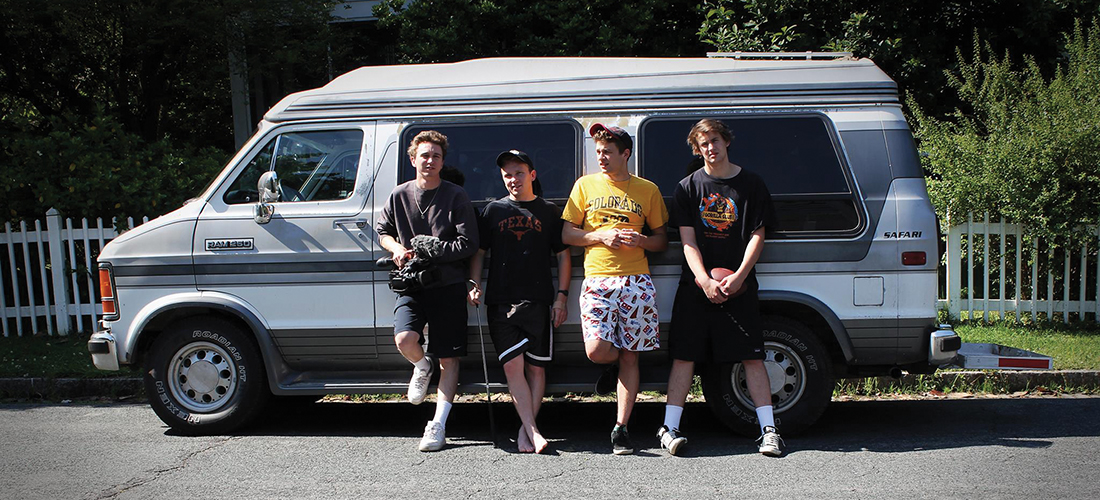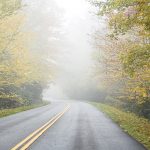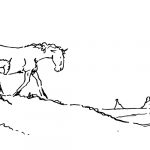
Nifty 50
The bare essentials of golf
By Lee Pace
Photo: Teddy Leinbach, Jack Leinbach, Hayden Swanson, Colin Wilkin
Donald Ross was the son of a Scottish carpenter who began his career in golf wearing overalls and hunched on his hands and knees caring for the turf and bunkers at the course in his hometown of Dornoch. No silver spoons here, which is why Ross, despite the wealth and fame he achieved as an adult designing golf courses in America, always believed, “There is no good reason why the label ‘rich man’s game’ should be hung on golf.”
That yin and yang of the elite vs. the masses, private vs. public, upstairs vs. downstairs has hovered around the sport for more than a century. But the essence of the game remains the same: club, ball, hole, lowest strokes wins.
“I have always believed being able to play golf is not necessarily a right and not necessarily a privilege,” says Karl Kimball, head pro and owner-partner at Hillandale Golf Course in Durham. “It is more of an honor because of all the history the game has wrapped itself around.
“Whether it’s a private club or a daily-fee facility, the common thread is the game of golf. That’s what ties everyone together. Unfortunately, we can get wound up on some of the idiosyncrasies of our clubs, almost like religion.”
Which is why Kimball was delighted to see a young man who grew up playing golf at Hillandale, a public course that dates in its original form to Durham Country Club in 1910, embark on an ambitious project to travel the United States and peer under the hood of golf at a grassroots level.
The idea was simple, yet ambitious: 50 states, 50 rounds of golf, 50 days.
The resulting journey organized by Teddy Leinbach that included his brother, Jack, and friends Colin Wilkins and Hayden Swanson is the subject of a film released in November titled, “50 Over.” The one hour and 20 minutes of run time explores, as Leinbach says, “the tattered fairways and diverse personalities of public courses. We wanted to strip golf of its elitist image and find out what it really means to play golf.”
Leinbach was a self-proclaimed “sports nut” as a kid growing up in Durham, where his father practices internal medicine and psychiatry, and Leinbach played baseball, basketball, soccer and golf, among other sports. He attended Virginia Commonwealth University to study painting and illustration, then pivoted to filmmaking his sophomore year. After graduating in 2016, he created Airball Films to tell stories of things that interested him.
Among them, golf.
“We have a lot of young stars playing golf, but I don’t think they embody enough of the counter-culture movement in golf that is going to get people outside of the golf world interested in playing,” Leinbach says.
All four golfers were in their early 20s in the summer of 2017 when they made their odyssey. The Leinbach brothers had played lots of golf growing up at Hillandale and had single-digit handicaps; the others were essentially beginners.
The only requirement in planning the trip was that every course be open to the public. They started in Westbrook, Maine, at a course called Sunset Ridge, and used the condensed geography of New England to knock out 10 courses in five days. From there they ventured down the Mid-Atlantic into the South, then wound their way across the country. The last leg of the trip had them flying from Seattle to Alaska and then hopping another plane to Hawaii.
The young golfers at various times ate canned tuna on crackers, beef jerky and bagels and stopped at Huddle Houses along the way. “I’m still waiting on that Huddle House sponsorship,” Leinbach says with a laugh. Sometimes their attire stretched to gym shorts, tank tops and Converse sneakers; at times they played golf barefoot. (Management at one course asked them to leave, since they didn’t all have collared shirts.) They stopped to play pickup basketball and film the turtles and bison they saw along the way. They slept in the van or in tents pitched along the road.
They pooled their money and bought a 1991 Dodge camper van for the trip, but the vehicle was a lemon and finally caught on fire alongside an interstate in Illinois. The flames engulfed some of their clothes and golf clubs and destroyed Leinbach’s and brother Jack’s driver’s licenses, so Swanson flew back to Durham, picked up another vehicle and drove back to Illinois to resume the trip.
“We were lucky we had banked some days early in the trip,” Leinbach says. “We were on a tight schedule the rest of the way but made the 50th course on the 50th day.”
The themes running through the film are the fresh air, the great out-of-doors, the thrill of that well-struck shot, and the interesting people they meet along the way.
“What’s not to like about golf?” muses one player they found in the Midwest. “It’s the ultimate test of patience and a game that tortures you, but for some reason you keep going.”
Adds another, “No matter where you are in the world, you can generally find a golf course, and it’s the most serene place you can be.”
In Weed, California, they found a man who used to work for ClubCorp managing its portfolio of hundreds of high-end clubs. Now he’s up with the roosters to mow the greens.
“I found this semi-chill job, I live here, work here, have fun here,” he said as he fired up the Toro greens mower. “There is a Volkswagen version of golf, where you can get a great golf experience. It’s a cool message you guys are putting out. Anyone can golf across the country and you don’t have to have a $30,000 club membership.”
They split one day surfing and golfing on the California coast and were joined by a local who compared the two sports: “You can get a dopamine rush in both,” the man said. “Surfing is like that; golf is like that. Out of nowhere, you can hit the best shot of your life, you can catch the best wave of your life, and in both you get that flood of feel-good stuff.”
Leinbach says his foursome set out to explore golf away from the country club and strip the game of its elitist stereotype. While those boilerplates do, of course, exist, it’s wrong to paint the game with that brushstroke alone.
“We saw how a love for a game can bring people together, regardless of background, how golf can inspire, create change and form relationships,” Leinbach says. “We found that money, class, race, gender and other arbitrary distinctions that keep us divided can be broken down with an easy swing of the club.”
The film certainly resonated with Kimball, who’s been at Hillandale since 2007 and grew up playing golf on a nine-hole public facility in New Lexington, Ohio.
“I could play when I was 8 years old and could prove to the owner of the course I could get around in a decent amount of time,” he says. “I watched this film and a lot of it was staring me in the face when I grew up.”
In his next breath, Kimball marvels at how healthy golf is at his facility as 2020 winds down. COVID-19 has been hell; but golf courses have been a socially distanced refuge. His driving range business is beating all records, and more than 40 percent of Hillandale’s rounds are by folks walking the course.
“It’s incredible what’s happening with the game,” he says. “If anything good has come out of COVID, it’s that golf has gotten a shot in the arm. If you play the game and get a little hankering for it, it doesn’t let you go.”
Teddy Leinbach’s foursome has proof of that in all 50 states. PS
Lee Pace has written about the Sandhills golf scene for more than 30 years. Contact him at leepace7@gmail.com. The film 50 Over is available for viewing at www.fiftyoverfilm.com at a cost of $10.





